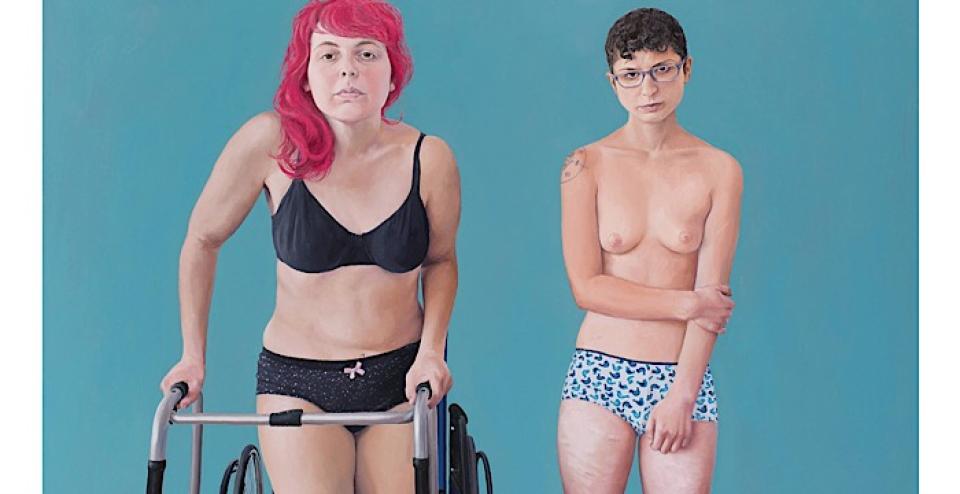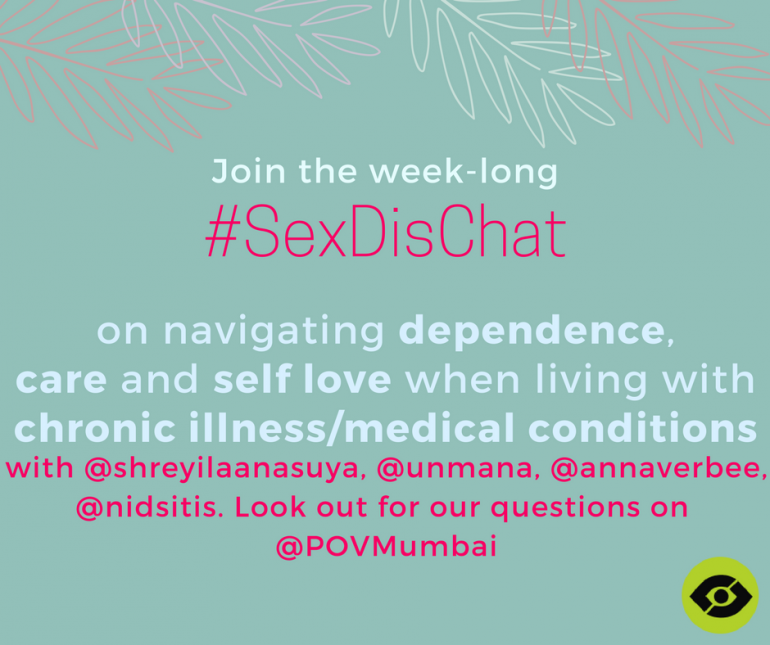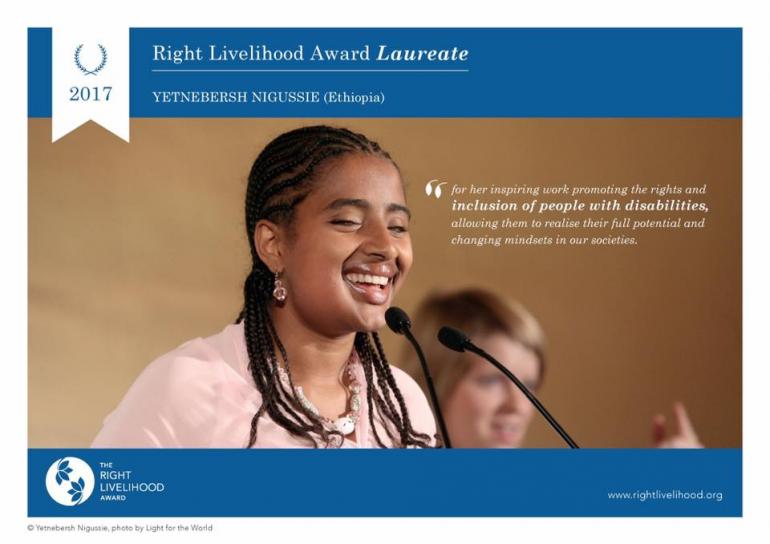
Genna & Felix by Kate Arthur. Image source: @katearthurartist
A university friend of mine was diagnosed with multiple sclerosis (MS) a few years ago and as a result of the disease is now disabled. Reading the posts she shares on social media about how she navigates the world as a disabled person has made me more aware of how disabled-unfriendly our world is. Whether intentionally or not, her posts on social media are helping shine a spotlight on disability. This inspired me to do some research into how other womxn in the Global South are doing the same.
Here’s to disturbing homophobia, transphobia, and ableism every day!
The university friend I mentioned above is Genna Gardini – a writer, teacher, poet and fierce feminist. In her tweets, Gardini often shares her experiences of ableism – "discrimination and social prejudice against people with disabilities. Ableism characterizes persons as defined by their disabilities and as inferior to the non-disabled." By sharing her experiences, Gardini is using her social media accounts to raise awareness, a fundamental strategy adopted by feminist activists to reach their goals.
By sharing her experiences, Gardini is using her social media accounts to raise awareness, a fundamental strategy adopted by feminist activists to reach their goals.

Text of the Gena Gardini tweet: "Today in casual ableism: A stranger gets out lift as I go in. They ask "Were you always in a wheelchair or is this now just a new thing"?"

Text of Genna Gardini tweet: "Today in casual ableism: Was doing errands & a stranger grabbed my wheelchair then started pushing me w/out asking if he could do so first."
In 2017, Gardini and Felix – Gardini’s partner – were featured in an award-winning painting by Kate Arthur, a South African artist working in mediums of painting, drawing and printmaking. Interested in portraiture, identity and representations of the body (pictured above). Gardini shared the painting on her social media platforms and although the painting received positive responses, it also received some negative ones. Gardini took to social media to share her thoughts on people’s negative responses:
"Reading through some of the public responses to Kate’s beautiful painting. There are a few negative comments and some of it is aimed at her subject matter. Us. Two queer bodies and one visibly disabled body. Some people called it ‘gross’. Others, talking about the painting’s power, said it was ‘disturbing’. A depiction of defiant queerness and disability is disturbing. What I love about this painting is that Kate doesn’t try to make us look palatable or apologetic. We’re fierce in this picture and that makes others uncomfortable. So often we are expected to hide our queerness and disability or make apologies for it. And if we don’t that is seen as disturbing. Here’s to disturbing homophobia, transphobia, and ableism every day!"
What I love about this painting is that Kate doesn’t try to make us look palatable or apologetic. We’re fierce in this picture and that makes others uncomfortable. So often we are expected to hide our queerness and disability or make apologies for it. And if we don’t that is seen as disturbing. Here’s to disturbing homophobia, transphobia, and ableism every day!
Amplifying the voices of womxn and removing barriers to free speech and expression
Point of View is a Mumbai-based non-profit platform that brings the points of view of women into community, social, cultural and public domains through media, art and culture. One of the ways they amplify the voices of women is through their social media platforms. For instance, in September 2017, Point of View arranged a week-long tweet chat on Twitter using the hashtag #SexDisChat. A tweet chat is "using Twitter to talk about a common interest with others during a preset time. It’s like an online chatroom where you add to the discussion by tweeting" (Twubs, 2015). #SexDisChat focused on navigating dependence, care and self-love when living with chronic illness/medical conditions.

Image source: @povmumbai
Tweet chats and hashtags can be effective strategies for feminist activists to embrace as they encourage network-building, the creation of counterpublics and network publics. Tweet chats encourage like-minded people to engage in a discussion and promote the exchanging of ideas and/or experiences. Hashtags allow Twitter users to follow and contribute towards a hashtag conversation and can help encourage solidarity. For a more in-depth discussion on other tactics feminist activists can implement on Twitter to reach their goals, see my blog 10 ways to make the most of Twitter as a feminist activist.
Asking questions on social media is a further tactic often employed by feminist activists. Questions can be an effective tactic on social media as they can foster engagement, encourage discussion and participation, and promote knowledge and experience sharing. Below are two examples of questions Point of View asked users during their #SexDisChat

Text of the tweet by Point of View: "As women living with chronic illness/medical conditions, have your ideas of gender roles/identities been questioned at any point? #SexDisChat."

Text of the tweet by Point of View: Next #SexDisChat question for today - What kind of behaviours from others have made it easier for you to deal with your illness/condition?
Promoting gender and disability inclusion in overall development
Yetnebersh Nigussie is an Ethiopian human rights activist, particularly interested in promoting gender and disability inclusion in overall development. Through her Facebook page, Nigussie employs a number of strategies to raise awareness about disability. For instance, agenda-setting. Agenda-setting is "a theory about the transfer of salience from the mass media’s pictures of the world to those in our heads" (McCombs & Ghanem, 2008:67). In other words, "the media’s agenda sets the public’s agenda" (McCombs & Ghanem, 2008:67). Nigussie acts as an agenda-setter by sharing several news stories from alternative or non-commercial media sources (sources which the public may not be familiar with) and bringing these stories to her followers’ attention. The stories she’s shared recently have dealt with the rights of women and girls with disabilities, the inclusion of children with disabilities, and tracking disability inclusion in the Sustainable Development Goals.
Nigussie acts as an agenda-setter by sharing several news stories from alternative or non-commercial media sources and bringing these stories to her followers’ attention. The stories she’s shared recently have dealt with the rights of women and girls with disabilities, the inclusion of children with disabilities, and tracking disability inclusion in the Sustainable Development Goals.
Nigussie also uses her Facebook page to share information about awards she’s received, interviews she’s participated in, and videos of forums and events she has spoken at. By sharing content in different formats (video and text), Nigussie is encouraging inclusivity. For instance, a user who is visually impaired may not be able to engage with the written content on Nigussie’s page but they can engage with the video content. From what I can see on Nigussie’s page, it appears she has only been active on Facebook since June 2017. Hopefully she will continue making use of the platform to share her messages with the world.

Image source: Nigussie’s Facebook page
Social media can be an effective communication tool for feminist activists to reach their goals. It can be a time- and cost-efficient communication channel, it allows for communication between countless people globally and can be accessed anywhere, anytime. The womxn discussed above are embracing social media and are applying various tactics such as hashtags, creating counterpublics, tweet chats and agenda-setting to help raise awareness about disability. Through their work, I have become more aware of how disabled-unfriendly our world is and hopefully with womxn like Gardini, Nigussie, Point of View and many others shining the spotlight on disability, we will one day live in a world that is more inclusive. However, it’s not only the disabled who are responsible for fostering this change, able-bodied people need to get involved too.
Hopefully with Gardini, Nigussie, Point of View and many others shining the spotlight on disability, we will one day live in a world that is more inclusive. However, it’s not only the disabled who are responsible for fostering this change, able-bodied people need to get involved too.
Footnotes
References
McCombs, M. & Ghanem, S.I. (2008). The Convergence of Agenda Setting and Framing. In Framing Public Life: Perspectives on Media and Our Understanding of the Social World. S.D. Reese, O.H. Gandy & A.E. Grant, Eds. New Jersey: Lawrence Erlbaum Associates. 67-82.
Twubs. 2015. Twitter chats: get involved. twubs.com/Twitter-chats/about
- 6713 views






Add new comment